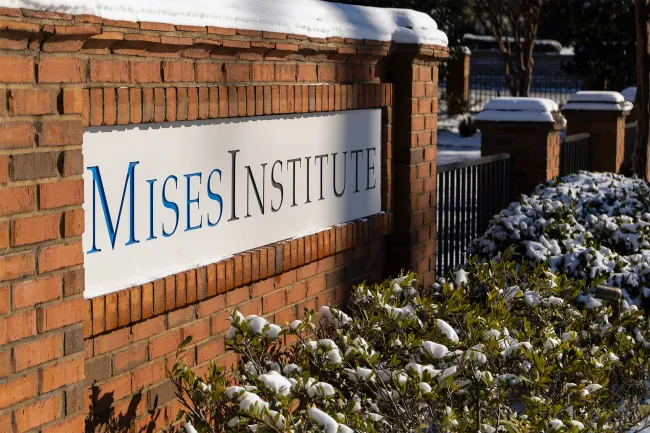Long before the Blockchain Era, a landmark Scottish lawsuit posed a question that still echoes today: Can money carry memory—or must it forget? In 1748, Hew Crawfurd—a lawyer in Edinburgh—signed and recorded the serial numbers of two £20 notes before mailing them to a merchant in Glasgow. When the letter failed to arrive, Crawfurd notified the bank and publicized the theft. Months later, one note resurfaced at the Royal Bank’s office. In Crawfurd v. The Royal Bank, the Court ruled that if Crawfurd could vindicate the banknote, commerce would cease, since the entire history of every note involved in a transaction would need to be disclosed.
Throughout history, money has taken various forms—from livestock to cowrie shells to precious metals. As Carl Menger explained, in barter systems, certain commodities became media of exchange due to their salability. The quality of money depends on certain characteristics: portability, durability, divisibility, recognizability, scarcity, and the often-overlooked fungibility, which has grown in importance in the digital age.
Fungibility—the property making units of a good interchangeable and indistinguishable—exists on a spectrum. At one end, unique assets such as real estate or paintings are inherently non-fungible. At the other end, gold and silver exhibit perfect fungibility, as they can always be melted, refined, and recast. Fiat currencies fall in the middle: fungible under the law but not objectively, as demonstrated by the ruling in Crawfurd v. The Royal Bank.
Cryptocurrencies
In evaluating monetary qualities, there’s no doubt that cryptocurrencies excel in terms of portability, durability, divisibility, and recognizability. Satoshi Nakamoto set the standard for scarcity with Bitcoin’s decentralized protocol and verifiable supply cap of 21 million BTC. But what about fungibility?
As in the case of Crawfurd v. The Royal Bank, a lack of fungibility threatens the usability of a medium of exchange. The Bitcoin blockchain is permissionless, but also transparent. The base unit of Bitcoin—known as Satoshis or Sats—equals one-hundred-millionth of a BTC. Following protocol upgrades (Segregated Witness and Taproot), Sats became identifiable. Using the Ordinals protocol, photos and videos can be inscribed onto individual Sats, forming non-fungible tokens (NFTs). Similarly, rare Sats—such as those used in the transaction that birthed Bitcoin Pizza Day—command a premium among collectors.
While NFTs may enhance value, tainted coins are devalued due to compromised liquidity. Depending on the identity of previous owners or the specifics of past transactions, acceptability may be impacted, thereby muddling economic calculations.
In 2018, the Office of Foreign Assets Control (OFAC) began adding BTC addresses to its Specially Designated Nationals and Blocked Persons List (SDN List). During covid protests, the Royal Canadian Mounted Police ordered exchanges to block transactions associated with the Freedom Convoy. Elsewhere in the crypto world, Ethereum (ETH) block builders and centralized entities like Tether (USDT) have respectively excluded transactions and frozen wallets in compliance with the SDN List. Coinbase and other exchanges explicitly refuse crypto-assets from sanctioned addresses. As a result, 1 BTC ≠ 1 BTC, 1 ETH ≠ 1 ETH, and 1 USDT ≠ 1 USDT.
When coins are traceable, fungibility breaks down. As AI advances, mapping transaction networks becomes more precise—and more dangerous. Determining criminality remains at the discretion of individual governments. A tainted coin may have funded a heinous act—or simply belong to a dissident opposing prevailing narratives.
Imagine the following scenario: Gil’s down on his luck and holds a yard sale. Bitcoin advocates from around town buy up his belongings. Unbeknownst to Gil, the stranger who bought his hotplate paid with tainted coins. The next day, Gil sends the proceeds to an exchange, only to have his account frozen and the authorities alerted. At best, Gil is left penniless; at worst, he becomes entangled in a legal nightmare for crimes he didn’t commit.
In the absence of privacy, can digital money retain its fungibility? Theoretically, yes—but expecting a society to treat all monetary units as equivalent, even when transaction histories are transparent, is unrealistic. Once money becomes traceable, its history becomes relevant. Where surveillance is possible, censorship inevitably follows. Thus, privacy acts as a shield that ensures monetary units remain indistinguishable and are treated equally.
In a previous article, I explored privacy-preserving services through the lens of demonstrated preference and subjective value theory. People often claim to value privacy. A public consultation of a digital euro—conducted by the European Central Bank—found that 43 percent of respondents identified privacy as their most desired feature. Yet, in practice, privacy preservation in monetary contexts remains limited. As nations push toward cashless societies, maintaining anonymity becomes increasingly difficult.
However, on the fringes of society, where exposure can mean theft, arrest, or worse, privacy is a matter of survival. From this, we can deduce that black markets are populated by those who subjectively rank privacy preservation above all else. Unsurprisingly, dark market users demonstrate their preference for private digital cash.
Dark Markets
Since the Silk Road launched in February 2011, the largest peer-to-peer marketplaces using cryptocurrencies have operated on the dark web. Unlike traditional websites, accessing these markets requires specialized browsers designed for anonymity. For those engaged in illegal activities, privacy is essential—but in truth, anyone who takes the time and effort to access the dark web prioritizes anonymity.
In its 2025 Crypto Crime Report, Chainalysis estimated darknet market transactions at $2.3 billion in 2022 and $2 billion in 2023, partly attributing this decline to a migration from BTC to Monero (XMR). Though mentioned throughout, Monero is excluded from their analysis due to its private nature.
Transaction figures for darknet markets are notoriously difficult to measure. Dread—a darknet Reddit-like forum—designates six drug marketplaces on its “superlist.” Three accept both BTC and XMR; the others—led by Archtyp, with almost 420,000 users as of April 2024—accept only XMR. A separate examination of the transaction logs of Incognito Market—formerly one of the largest narcotics marketplaces—reveals that XMR transactions (265,375) exceeded BTC transactions (244,483), with a noticeable shift toward XMR at the tail end of its four-year run.
Store of Value or Medium of Exchange?
Early ties to the Silk Road led to Bitcoin’s demonization, with politicians branding it a tool for criminals. Over time, blockchain surveillance companies emerged, and governments passed anti-money laundering (AML) and know your customer (KYC) legislation. Bitcoin is no longer perceived as a threat—BTC is traded publicly through exchange-traded funds (ETFs) and fills corporate and government reserves worldwide. After 16 years, Bitcoin has solidified itself as “digital gold,” with its scarcity serving as a hedge against unchecked central bank money printing.
While Bitcoin’s liquidity is unmatched, its effectiveness as a medium of exchange is hampered by its transparent ledger. On any given day, Bitcoin processes 10 to 25 times more transactions than Monero, and as of June 14, 2025, Bitcoin’s $2.09 trillion market cap dwarfs Monero’s $5.75 billion. Bitcoin’s network effects are formidable, and future protocol upgrades may enhance fungibility. However, as of now, Monero has assumed the role that Bitcoin once hinted at in its earliest days: private, peer-to-peer electronic cash. Forked from Bytecoin in 2014 and based on the CryptoNote codebase, Monero was built on a foundation of privacy. Its protocol combines stealth addresses to conceal recipients, RingCT to hide amounts, and Ring Signatures to obfuscate senders. As a result, 1 XMR = 1 XMR.
As the leading privacy coin, Monero continues to challenge the state’s control over money. Predictably, efforts to curtail XMR adoption have been ongoing. Under mounting government pressure, XMR has been delisted from most major exchanges and faces a European Union-wide ban starting in 2027. Meanwhile, the IRS has paid two $625,000 bounties in an effort to break Monero’s privacy, so far without success.
Despite attacks from the state, Monero has proven resilient. Decentralized peer-to-peer trading platforms are gaining adoption, and atomic swaps allow users to exchange XMR for other cryptocurrencies across blockchains without centralized intermediaries. With privacy baked in by default, Monero is intrinsically fungible and truly censorship-resistant.
Conclusion
The state has weaponized money and will do so again. Dissidents have been debanked. Activists and ordinary citizens alike have had funds frozen or seized. The censorship of crypto addresses—coupled with advanced surveillance—shows that financial tyranny is not a future threat but a present reality. A Central Bank Digital Currency (CBDC) would only accelerate this trend, granting governments real-time power to prohibit transactions that defy the dictates of the regime.
As Ludwig von Mises wrote:
It is impossible to grasp the meaning of the idea of sound money if one does not realize that it was devised as an instrument for the protection of civil liberties against despotic inroads on the part of governments.
Transparent blockchains, by their very nature, are incompatible with sound money. Fungibility is fragile and cannot survive without privacy. Digital assets that aren’t private by default become tools of control, putting our freedoms at risk. In a world where traceable digital payments are becoming the norm, private digital cash stands as a vital bulwark against the state.


